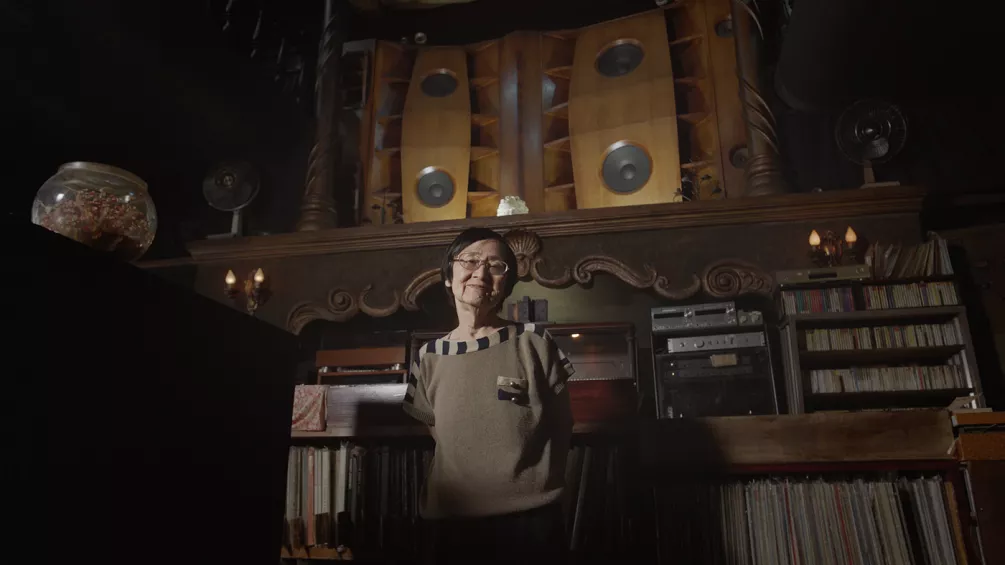
What inspired you to make A Century in Sound?
"So, I’m originally from New Zealand and I moved to Japan for a number of reasons — but one of them was to fall in love with music again, as strange as that sounds. I’d spent my whole life and career involved with music. I started as a radio DJ when I was 14, I was a music TV presenter in the ’90s. In my early twenties I started working for Red Bull Music Academy, travelled the world as one of their interviewers, made a TV series about global music culture — was a club DJ, worked in record stores.
"But somewhere in the 2000s, my relationship with music changed. I think I was also burnt out from years involved in club culture. At the same time, I’d been travelling to Japan regularly since 2004 and I found that analog music culture was still everywhere — record shops were everywhere, people were still buying vinyl, and all the sound systems you encountered were incredible. Music discovery in the old analogue ways I grew up with was still alive.
"In late 2014, I stepped into this near-100-year-old classical music café called Café Lion. That same week, I visited an experimental listening bar that played predominantly noise and drone records and it changed my life. The experience of sitting in Café Lion — no talking, everyone facing the speakers, listening to a whole side of a record — it dawned on me that I hadn’t listened in a long time.
"So I started seeking out as many of these places as I could, quickly found that there were ones for jazz, ones for tango — every twist and turn of modern music — and initially when I was thinking about making a documentary about the culture, the more I researched the topic, I realised that the culture only existed in Japan because of its very unique history. The two are very intertwined. You can’t talk about the culture of ongaku kissa cafes without talking about that 100 year history."
The kissa owner states that jazz kissas were at their peak in the '60s, with venues in the 100s, but now they’re down to around 30 — why is that?
"What Yoshida [Masahiro Yoshida - owner of Jazz Kissa Eigakan ] is referencing is the classic jazz kissa — the ones that started in the post-war era. Why is that? It’s down to the age of the owners. Sometimes their children don’t want to inherit their parents’ kissa, but what you find later on in the series is that there’s a whole new generation of young men and women opening their own places and putting their own spin on it.
"For me, it’s the most exciting thing — my music discovery these days is almost entirely analog and these new places play everything. What’s so amazing about all the new generation of ongaku kissa is that the owners play jazz right up to the present day, so you're hearing new records in real time. You’ll hear Carlos Niño, Arthur Russell, Japanese ambient records. So you've just got this really beautiful new generation — a lot of young woman owners too, running ongaku kissa.
"City development is another big threat. Tokyo is constantly in a state of urban renewal — especially places like Shibuya, where places of older heritage are getting knocked down to make way for department stores. So the older places are being lost, but new ones are popping up all over the city."
How did you choose the six establishments in the series? And how easy — or difficult — was it to convince the owners to tell their stories?
"Episode five goes around the world and episode six focuses on four places, but episodes one, two, three, and four each focus on a single place. I knew from the start that Café Lion and Bar Nightingale had to be in the film.
"Choosing the jazz kissa was harder — there are so many. I got on my bike and started riding around Tokyo visiting them. Eigakan was the second jazz kissa I ever stepped into, and the moment I stepped in I knew it was special. The sound was incredible, you could just feel the personality of the owner all over the walls — new wave cinema posters from the ’50s and ’60s, photos of the student movement — and there was a cat on the counter and every time the record would stop the cat would start meowing, until the record went back on.
"The sound system was incredible. I’d spent my whole career chasing music but I hadn’t had my jazz epiphany yet, and I just remember sitting in front of the speakers, hearing John Coltrane’s ‘Softly As In A Morning’s Sunrise’ — Live at the Village Vanguard, '61 — and I felt like I was there at the show. I walked away from Eigakan thinking: that’s the spot.
"But it was a long process to gain trust. I became a regular. For Café Lion, I visited every day, sometimes twice a day, for two years before even asking if I could film there. The management already knew me as the “weird guy from New Zealand” who kept requesting the same Beethoven piece by different conductors. Eventually they put the request to the family, and the family agreed. The same thing happened at Eigakan — I was a regular for three years before I asked."
